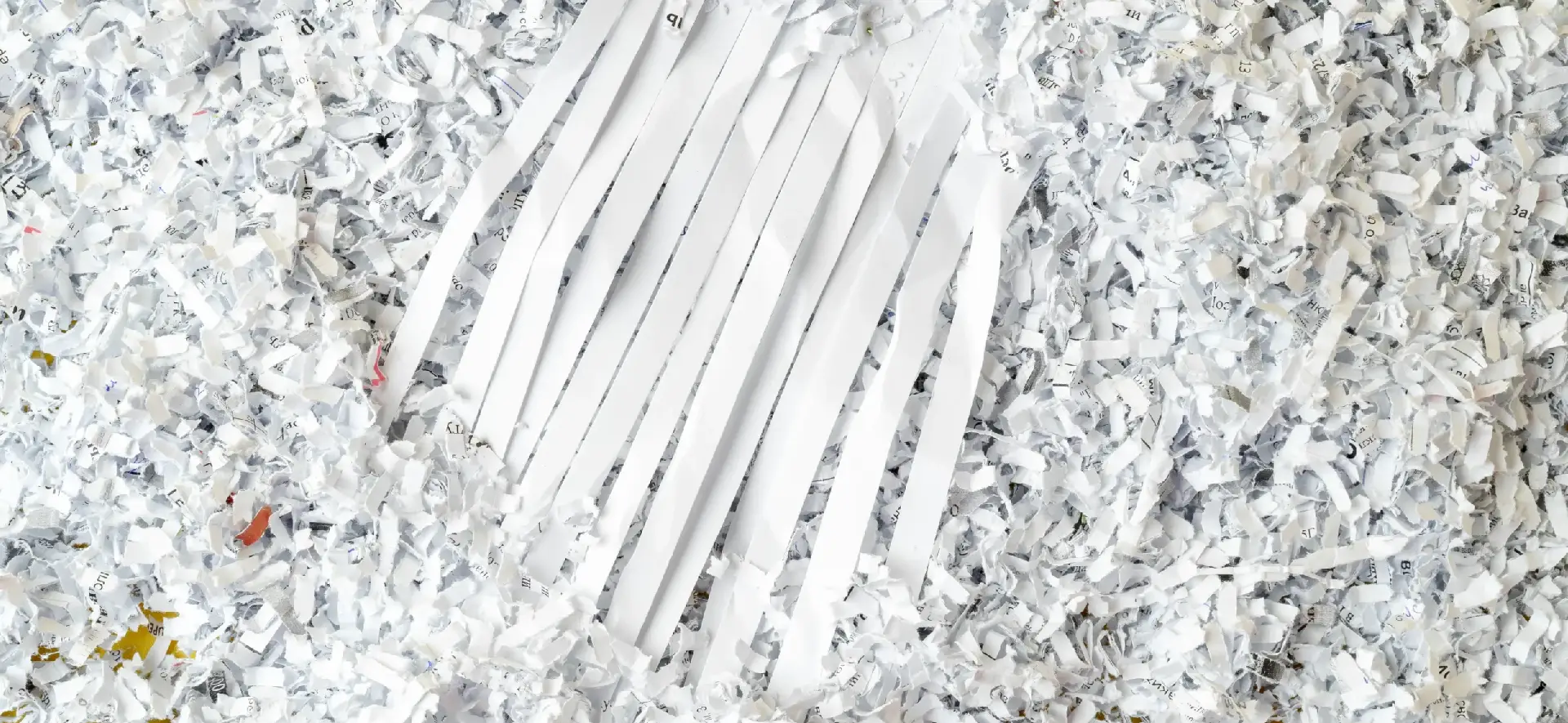In today’s digital age, the protection of sensitive information is more crucial than ever. Data breaches and identity theft are prevalent, and individuals and businesses alike must take proactive steps to safeguard their confidential documents. The importance of confidential document destruction cannot be overstated, as it serves as the first line of defence against the unauthorised access of personal and proprietary information. By ensuring that sensitive documents are securely destroyed, organisations can significantly mitigate the risk of data leaks and maintain the trust of their clients and stakeholders.
When confidential documents are not disposed of properly, they can fall into the wrong hands, leading to potential financial loss, reputational damage, and legal consequences. For businesses, the ramifications of a data breach can be devastating, resulting in hefty fines, loss of customer loyalty, and a tarnished brand image. Therefore, implementing a robust document destruction policy is essential for any organisation that handles sensitive information. This not only protects the privacy of clients and employees but also upholds compliance with various data protection regulations.
Moreover, confidential document destruction promotes a culture of security within an organisation. By prioritising the safe disposal of sensitive information, companies send a clear message that they value privacy and are committed to safeguarding data. This attitude towards security can enhance employee awareness and engagement, leading to more vigilant practices when handling confidential information. Ultimately, the journey of confidentially shredded documents begins with an understanding of the importance of their secure destruction, which sets the stage for responsible management and recycling of waste materials.
The Shredding Process: How Documents are Destroyed
The shredding process is a crucial component of document destruction, transforming sensitive materials into unreadable fragments that cannot be reconstructed. This process typically begins with the collection of documents that require destruction. These documents may include financial records, client information, medical files, and any other paperwork that contains personal or proprietary data. Once collected, they are transported to a shredding facility, where the actual shredding takes place.
At the shredding facility, documents are fed into high-capacity shredders that utilise advanced technology to ensure complete destruction. Depending on the level of security required, different shredding methods can be employed. Cross-cut shredders, for instance, cut documents in two directions, resulting in small confetti-like pieces that are virtually impossible to piece back together. This level of destruction is particularly important for organisations handling highly sensitive information, where even the smallest fragment could pose a significant risk.
Additionally, the shredding process often includes various stages of verification and documentation. Many reputable shredding companies provide certificates of destruction, which serve as proof that the documents have been securely destroyed. This documentation is not only essential for compliance purposes but also provides peace of mind to clients and stakeholders. The shredding process, therefore, is not merely about physical destruction; it encompasses a comprehensive approach to ensuring that sensitive information is irretrievably lost.
Secure Transportation: Ensuring Confidentiality Post-Shredding
Once documents are shredded, the next critical step is secure transportation of the shredded materials. This stage is vital in maintaining confidentiality, as it prevents any potential exposure of sensitive information during the transition to recycling facilities. Trusted shredding services implement strict protocols for transporting shredded materials, ensuring that they remain secure throughout the journey. This often involves using specialised vehicles that are fitted with secure locking systems to prevent unauthorised access.
In addition to physical security, the transportation process is also characterised by thorough tracking and monitoring. Many companies utilise GPS systems and secure containers to keep a precise record of where the shredded materials are at all times. This level of oversight adds an additional layer of assurance for clients, knowing that their shredded information is being handled responsibly and securely until it reaches the recycling stage.
Moreover, the importance of secure transportation extends beyond just protecting the shredded materials; it also demonstrates a commitment to responsible waste management. By ensuring that the shredded paper is delivered to certified recycling facilities, shredding companies contribute to a sustainable cycle of waste recovery. This commitment to security and sustainability reinforces the value of choosing a reputable shredding service that prioritises confidentiality at every stage of the document destruction process.
The Recycling Process: Turning Shredded Paper into Reusable Materials
Once the shredded documents reach the recycling facility, they embark on a new journey, transforming into reusable materials. The recycling process for shredded paper involves several stages that carefully handle the shredded fragments to produce high-quality recycled products. First, the shredded paper is sorted to remove any contaminants, such as plastics, metals, or other non-paper materials that may have inadvertently mixed in during the shredding process. This sorting is crucial for ensuring that the final recycled product meets industry standards.
Following the sorting phase, the shredded paper is then pulped. This involves mixing the paper fragments with water and chemicals to break down the fibres. The pulp is then processed to remove any remaining inks or contaminants, resulting in a clean slurry of paper fibres. This clean pulp can be used to create a variety of recycled paper products, including office paper, cardboard, and even insulation materials. The versatility of recycled paper underscores the importance of effective shredding and recycling practices, as it allows for the transformation of waste into valuable resources.
Moreover, the recycling of shredded documents significantly contributes to environmental sustainability. By reusing paper fibres, the demand for virgin materials is reduced, leading to lower deforestation rates and a decrease in the energy required for production. Additionally, recycling helps minimise landfill waste, which is increasingly becoming a pressing environmental concern. The journey of shredded documents from destruction to recycling exemplifies a sustainable approach to waste management, reinforcing the importance of responsible document disposal in protecting both personal information and the planet.
Environmental Benefits of Recycling Shredded Documents
The environmental benefits of recycling shredded documents extend far beyond merely reducing landfill waste. One of the most significant advantages is the conservation of natural resources. When shredded paper is recycled, it reduces the need for virgin wood pulp, which is sourced from trees. This conservation effort helps to preserve forests, maintain biodiversity, and combat climate change. Every tonne of recycled paper can save approximately 17 trees, 7,000 gallons of water, and enough energy to power an average home for six months.
In addition to resource conservation, recycling shredded documents plays a crucial role in reducing greenhouse gas emissions. The paper manufacturing process is energy-intensive, and by using recycled materials, manufacturers can significantly lower their carbon footprint. The production of recycled paper typically emits less carbon dioxide compared to the creation of paper from virgin fibres. This reduction in emissions contributes to a more sustainable environment, helping to mitigate the impacts of climate change and promote cleaner air for future generations.
Moreover, the recycling of shredded documents stimulates the circular economy by creating job opportunities in the recycling industry. As demand for recycled materials increases, so does the need for skilled workers to manage the recycling process. This not only fosters economic growth but also encourages communities to adopt more sustainable practices. By choosing to recycle shredded documents, organisations not only fulfil their responsibilities towards data protection but also contribute positively to the environment and society at large.
Legal and Compliance Aspects of Document Destruction and Recycling
Navigating the legal and compliance landscape surrounding document destruction and recycling is paramount for businesses and individuals alike. Various regulations dictate how sensitive information should be handled, destroyed, and recycled, ensuring the protection of personal data and privacy. For instance, laws such as the General Data Protection Regulation (GDPR) in Europe and the Health Insurance Portability and Accountability Act (HIPAA) in the United States impose strict guidelines on the management of confidential information. Failure to comply with these regulations can result in severe penalties and legal repercussions.
To adhere to legal requirements, organisations must implement comprehensive document destruction policies that outline the processes for secure disposal and recycling of sensitive materials. This includes regular audits and staff training to ensure that employees understand their responsibilities regarding data protection. Additionally, partnering with certified shredding and recycling services can help organisations meet compliance standards, as these providers are often well-versed in the relevant laws and regulations governing document destruction.
Furthermore, maintaining documentation of the destruction and recycling process, such as certificates of destruction, is essential for compliance purposes. These documents serve as proof that sensitive materials have been disposed of in accordance with legal requirements. They can also be invaluable in the event of an audit or investigation, providing evidence of an organisation’s commitment to data protection. By prioritising legal and compliance aspects, organisations not only protect themselves from potential liabilities but also foster a culture of accountability and trust within their operations.
Choosing a Reliable Document Shredding and Recycling Service
Selecting a reliable document shredding and recycling service is a critical decision that can greatly impact an organisation’s data security and environmental sustainability efforts. When searching for a provider, it is essential to consider several key factors that ensure the service meets industry standards and aligns with the organisation’s values. First and foremost, it is crucial to verify that the shredding company holds relevant certifications, such as ISO 9001 and NAID AAA certification. These certifications signify that the company adheres to strict guidelines and best practices in the field of document destruction and recycling.
Another important aspect to evaluate is the company’s reputation and experience in the industry. Reading customer reviews, seeking recommendations from trusted sources, and assessing the company’s history can provide valuable insights into its reliability and performance. A reputable shredding service should demonstrate a proven track record of secure document destruction, exceptional customer service, and adherence to compliance regulations. This transparency builds trust and confidence in the service being offered.
Finally, it is advisable to inquire about the shredding and recycling process itself. A reliable service should be able to provide detailed information about how documents are collected, shredded, transported, and recycled. Understanding these processes not only assures organisations of the security of their confidential information but also highlights the company’s commitment to environmental sustainability. By choosing a trustworthy document shredding and recycling service, organisations can safeguard their sensitive data while contributing to a more sustainable future.
Conclusion: The Sustainable Journey of Confidential Documents
The journey of confidentially shredded documents is a remarkable tale of security, responsibility, and sustainability. From the initial stages of secure destruction to the transformation into reusable materials, each step underscores the critical importance of proper document disposal practices. In a world increasingly concerned with data privacy and environmental sustainability, the role of shredding services becomes ever more significant.
As we have explored, the importance of confidential document destruction extends beyond mere compliance with regulations. It serves as a protective measure against data breaches and identity theft, safeguarding personal and proprietary information. The shredding process itself ensures that sensitive documents are irretrievably destroyed, while secure transportation maintains confidentiality throughout the entire lifecycle of the shredded materials.
Moreover, the recycling of shredded documents not only contributes to environmental sustainability but also fosters a circular economy that benefits society as a whole. By choosing reliable shredding and recycling services, organisations can fulfil their legal obligations while promoting responsible waste management practices. Ultimately, the journey of confidential documents from destruction to recycling exemplifies a commitment to security and sustainability, paving the way for a safer and greener future.




